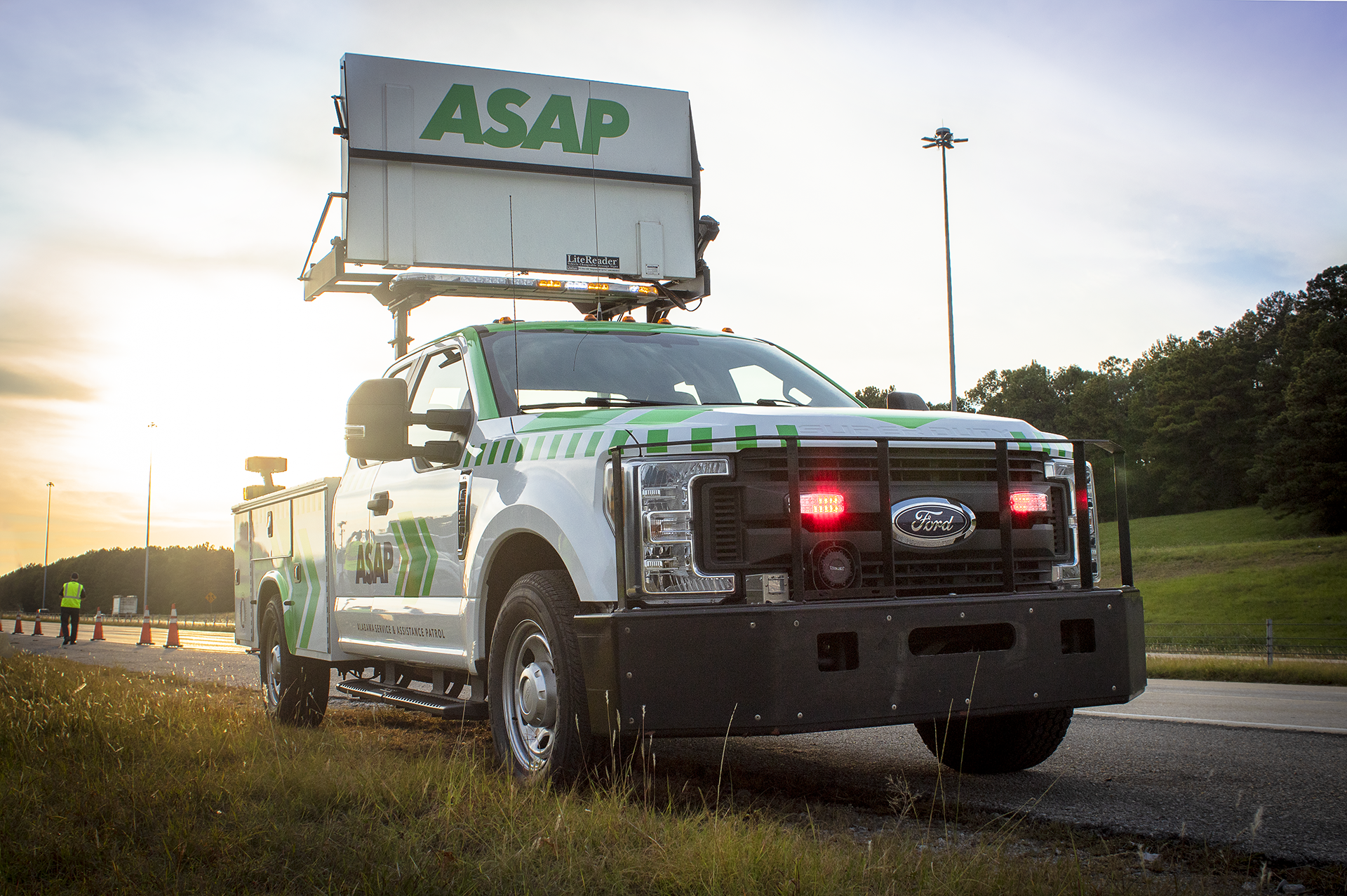During Crash Responder Safety Week, ALDOT highlights the invaluable role of its Alabama Statewide Assistance Program (ASAP) crews in ensuring safety on Alabama’s roadways.
ASAP crews are dedicated to assisting stranded motorists and providing traffic control at crash scenes. Their primary goal is to assist stranded motorists in safely exiting the roadway and to facilitate the work of first responders by providing traffic control and other support services.
How ASAP Works
When an accident occurs, law enforcement may request ASAP assistance. ASAP crews, equipped with specialized vehicles and trained personnel, respond to the scene. Their responsibilities include:
- Traffic Control: Setting up cones and using digital arrow boards, to guide traffic safely around the incident.
- Motorist Assistance: Providing aid to stranded motorists, such as jump-starting vehicles, changing tires, or delivering fuel.
- Scene Clearing: Assisting in clearing debris and removing disabled vehicles from the roadway to minimize traffic congestion and the risk of secondary accidents.
Enhanced Safety Measures
Recent additions to the ASAP fleet, such as the LaneBlade and wheel lifts, enhance their ability to clear roadways quickly and efficiently.
Challenges and Solutions
ASAP crews often face challenges such as heavy traffic and adverse weather conditions. To mitigate these challenges, they prioritize safety and communicate effectively with the Traffic Management Center so they know what is going on before they get to an incident.
Making a Difference
ASAP crews have a significant impact on traffic safety by:
- Reducing traffic congestion
- Preventing secondary crashes
- Providing timely assistance to stranded motorists
- Supporting first responders in their efforts to keep roadways safe
By recognizing and appreciating the work of ASAP crews, we can collectively contribute to safer roads for all.




